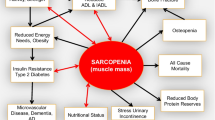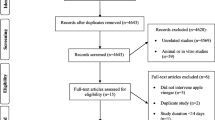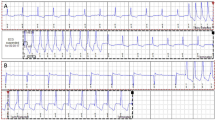Abstract
3-Hydroxy-3-methylglutaryl coenzyme A reductase inhibitors (statins) are generally well-tolerated lipid-lowering drugs. However, they are associated with myopathy, and incidence rates of muscle-related complaints predicted from clinical trials may underestimate rate of occurrence of these side effects in clinical practice. The development of a standardized system for description and documentation of statin-associated myopathy that includes the entire spectrum of muscle complaints would provide valuable data for researchers and clinicians seeking to better understand statin-induced muscle complaints. Among the risk factors for myopathy are polypharmacy, high-dose statin treatment, aging, and diabetes. The etiology of statin-induced myopathy is not well understood, but potential contributing mechanisms include decreases in mevalonate pathway products, mitochondrial dysfunction, alterations in gene expression related to apoptosis and protein degradation, and genetic predisposition.
Similar content being viewed by others
References and Recommended Reading
Thompson PD, Clarkson P, Karas RH: Statin-associated myopathy. JAMA 2003, 289:1681–1690.
Jacobson TA: Statin safety: lessons from new drug applications for marketed statins. Am J Cardiol 2006, 97(8A):44C–51C.
Merck & Co: I: MECACOR (LOVASTATIN). In: Prescription Information. 2005.
Kashani A, Phillips CO, Foody JM, et al.: Risks associated with statin therapy: a systematic overview of randomized clinical trials. Circulation 2006, 114:2788–2797.
Thavendiranathan P, Bagai A, Brookhart MA, Choudhry NK: Primary prevention of cardiovascular diseases with statin therapy: a meta-analysis of randomized controlled trials. Arch Intern Med 2006, 166:2307–2313.
Maggini M, Raschetti R, Traversa G, et al.: The cerivastatin withdrawal crisis: a “post-mortem” analysis. Health Policy (Amsterdam) 2004, 69:151–157.
Pasternak RC, Smith SC Jr, Bairey-Merz CN, et al.: ACC/AHA/NHLBI clinical advisory on the use and safety of statins. J Am Coll Cardiol 2002, 40:567–572.
Yilmaz MB, Pinar M, Naharci I, et al.: Being well-informed about statin is associated with continuous adherence and reaching targets. Cardiovasc Drugs Ther 2005, 19:437–440.
Hansen KE, Hildebrand JP, Ferguson EE, Stein JH: Outcomes in 45 patients with statin-associated myopathy. Arch Intern Med 2005, 165:2671–2676.
MRC/BHF Heart Protection Study of cholesterol lowering with simvastatin in 20,536 high-risk individuals: a randomised placebo-controlled trial. Lancet 2002, 360:7–22.
Sinzinger H, Wolfram R, Peskar BA: Muscular side effects of statins. J Cardiovasc Pharmacol 2002, 40:163–171.
Piercy MA, Sramek JJ, Kurtz NM, Cutler NR: Placebo response in anxiety disorders. Ann Pharmacother 1996, 30:1013–1019.
Thompson PD, Clarkson PM, Rosenson RS: An assessment of statin safety by muscle experts. Am J Cardiol 2006, 97:69C–76C.
Jones JK: Spontaneous reports cannot serve as a basis for comparison of two drugs. Am J Cardiol 2003, 92:1141–1142.
de Lemos JA, Blazing MA, Wiviott SD, et al.: Early intensive vs a delayed conservative simvastatin strategy in patients with acute coronary syndromes: phase Z of the A to Z trial. JAMA 2004, 292:1307–1316.
Kent DH: When averages hide individual differences in clinical trials. Am Scientist 2007, 95:60–68.
Ballantyne CM, Corsini A, Davidson MH, et al.: Risk for myopathy with statin therapy in high-risk patients. Arch Inter Med 2003, 163:553–564.
Talbert RL: Safety issues with statin therapy. J Am Pharm Assoc 2006, 46:479–488; quiz 488–490.
Oh J, Ban M, Miskie B, et al.: Genetic determinants of statin intolerance. Lipids Health Dis 2007, 6:7.
Vermes A, Vermes I: Genetic polymorphisms in cytochrome P450 enzymes: effect on efficacy and tolerability of HMG-CoA reductase inhibitors. Am J Cardiovasc Drugs 2004, 4:247–255.
Baker SK: Molecular clues into the pathogenesis of statin-mediated muscle toxicity. Muscle Nerve 2005, 31:572–580.
Maitland-van der Zee AH, Boerwinkle E: Pharmacogenetics of response to statins: where do we stand? Curr Atheroscler Rep 2005, 7:204–208.
Ardern CI, Katzmarzyk PT, Janssen I, Church TS, Blair SN: Revised Adult Treatment Panel III Guidelines and Cardiovascular Disease Mortality in Men Attending a Preventive Medical Clinic. Circulation 2005, 112:1478–1485.
US Securities and Exchange Commission: Oldest Baby Boomers Turn 60!. Available at http://sec.gov/news/press/extra/seniors/agingboomers.htm. Accessed April 17, 2007.
US Centers for Disease Control: National Diabetes Fact Sheet 2005. Available at http://www.cdc.gov/diabetes/pubs/estimates05. Accessed April 17, 2007.
Sinzinger H, O’Grady J: Professional athletes suffering from familial hypercholesterolaemia rarely tolerate statin treatment because of muscular problems. Br J Clin Pharmacol 2004, 57:525–528.
Thompson PD, Zmuda JM, Domalik LJ, et al.: Lovastatin increases exercise-induced skeletal muscle injury. Metab Clin Exp 1997, 46:1206–1210.
Omar MA, Wilson JP, Cox TS: Rhabdomyolysis and HMG-CoA reductase inhibitors. Ann Pharmacother 2001, 35:1096–1107.
Grundy SM, Cleeman JI, Merz CN, et al.: Implications of recent clinical trials for the National Cholesterol Education Program Adult Treatment Panel III guidelines. Circulation 2004, 110:227–239.
Bruckert E, Hayem G, Dejager S, et al.: Mild to moderate muscular symptoms with high-dosage statin therapy in hyperlipidemic patients—the PRIMO study. Cardiovasc Drugs Ther 2005, 19:403–414.
Buse J: Statin treatment in diabetes mellitus. Clin Diabetes 2005, 21:168–172.
Snow V, Aronson MD, Hornbake ER, et al.: Lipid control in the management of type 2 diabetes mellitus: a clinical practice guideline from the American College of Physicians. Ann Intern Med 2004, 140:644–649.
Vijan S, Hayward RA: Pharmacologic lipid-lowering therapy in type 2 diabetes mellitus: background paper for the American College of Physicians. Ann Inter Med 2004, 140:650–658.
Graham DJ, Staffa JA, Shatin D, et al.: Incidence of hospitalized rhabdomyolysis in patients treated with lipid-lowering drugs. JAMA 2004, 292:2585–2590.
Jacobson TA: Overcoming ‘ageism’ bias in the treatment of hypercholesterolaemia: a review of safety issues with statins in the elderly. Drug Saf 2006, 29:421–448.
Ravnskov U: High cholesterol may protect against infections and atherosclerosis. QJM 2003, 96:927–934.
Guralnik JM, Alecxih L, Branch LG, Wiener JM: Medical and long-term care costs when older persons become more dependent. Am J Pub Health 2002, 92:1244–1245.
Desai MM, Zhang P, Hennessy CH: Surveillance for morbidity and mortality among older adults—United States, 1995–1996. MMWR CDC Surveill Summ 1999, 48:7–25.
Ko DT, Mamdani M, Alter DA: Lipid-lowering therapy with statins in high-risk elderly patients: the treatment-risk paradox. JAMA 2004, 291:1864–1870.
Deedwania P, Stone PH, Bairey Merz CN, et al.: Effects of intensive versus moderate lipid-lowering therapy on myocardial ischemia in older patients with coronary heart disease: results of the Study Assessing Goals in the Elderly (SAGE). Circulation 2007, 115:700–707.
Clarkson PM, Nosaka K, Braun B: Muscle function after exercise-induced muscle damage and rapid adaptation. Med Sci Sports Exerc 1992, 24:512–520.
Baker SK, Tarnopolsky MA: Statin myopathies: pathophysiologic and clinical perspectives. Clin Invest Med 2001, 24:258–272.
Urso ML, Clarkson PM, Hittel D, et al.: Changes in ubiquitin proteasome pathway gene expression in skeletal muscle with exercise and statins. Arterioscler Thromb Vasc Biol 2005, 25:2560–2566.
Paiva H, Thelen KM, Van Coster R, et al.: High-dose statins and skeletal muscle metabolism in humans: a randomized, controlled trial. Clin Pharmacol Ther 2005, 78:60–68.
Phillips PS, Haas RH, Bannykh S, et al.: Statin-associated myopathy with normal creatine kinase levels. Ann Intern Med 2002, 137:581–585.
Laaksonen R, Katajamaa M, Paiva H, et al.: A systems biology strategy reveals biological pathways and plasma biomarker candidates for potentially toxic statin-induced changes in muscle. PLoS ONE 2006, 1:e97.
Dricu A, Wang M, Hjertman M, et al.: Mevalonate-regulated mechanisms in cell growth control: role of dolichyl phosphate in expression of the insulin-like growth factor-1 receptor (IGF-1R) in comparison to Ras prenylation and expression of c-myc. Glycobiology 1997, 7:625–633.
Liao JK: Isoprenoids as mediators of the biological effects of statins. J Clin Invest 2002, 110:285–288.
Dirks AJ, Jones KM: Statin-induced apoptosis and skeletal myopathy. Am J Physiol 2006, 291:C1208–1212.
Zhong WB, Wang CY, Chang TC, Lee WS: Lovastatin induces apoptosis of anaplastic thyroid cancer cells via inhibition of protein geranylgeranylation and de novo protein synthesis. Endocrinology 2003, 144:3852–3859.
Author information
Authors and Affiliations
Corresponding author
Rights and permissions
About this article
Cite this article
Sewright, K.A., Clarkson, P.M. & Thompson, P.D. Statin myopathy: Incidence, risk factors, and pathophysiology. Curr Atheroscler Rep 9, 389–396 (2007). https://doi.org/10.1007/s11883-007-0050-3
Published:
Issue Date:
DOI: https://doi.org/10.1007/s11883-007-0050-3




